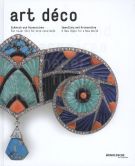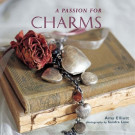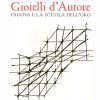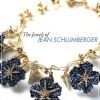Art Déco Jewellery and Accessoires A New Style for a New World
| Autore/i | a cura di Cornelie Holzach | ||
| Editore | Arnoldsche | Luogo | Stuttgart |
| Anno | 2009 | Pagine | 160 |
| Dimensioni | 23x28 (cm) | Illustrazioni | 183 ill. a colori n.t. |
| Legatura | cart. edit. ill. | Conservazione | |
| Lingua | Peso | 1500 (gr) | |
| ISBN | 3897902907 | EAN-13 | 9783897902909 |
momentaneamente non disponibile
Schmuck und Accessoires.
Ein neuer Stil fuer eine neue Welt.
Testo inglese/tedesco.
A magnificent show of the short-lived yet far-reaching stylistic intermezzo between the two world wars: from the most luxurious and elaborate jewels to costume jewellery made of Bakelite and Galalite. With a contribution on 1920s and 1930s fashion.
The end of the First World War left much of Europe faced with an entirely new political and social situation: Absolute monarchy was consigned to the dustbin of history and essays in democracy were the order of the day. The changed conditions and the new way of life associated with them required new forms of expression in music, dance, architecture and painting – and of course also in design. There France had led the field since the ground-breaking 1925 Exposition International des Arts Décoratifs et Industriels Modernes in Paris. Germany had not even been invited to that world exhibition – the effects of the Great War that had only ended a few years previously were still being felt.
All great jewellery-designers were strongly committed to the Art Déco style, which featured astringent sophistication in design and choice of materials: jewellers such as Cartier, Boucheron, René Lalique, Georges Fouquet and designers such as Jean Després and René Boivin. From about 1928, this canon of forms occurs both in the work of Naum Slutzky at the Bauhaus and the German jewellery industry as represented by Theodor Fahrner Nachf. Gustav Brändle in Pforzheim and Jakob Bengel in Idar-Oberstein. (T-CA)
Potrebbero interessarti anche...







